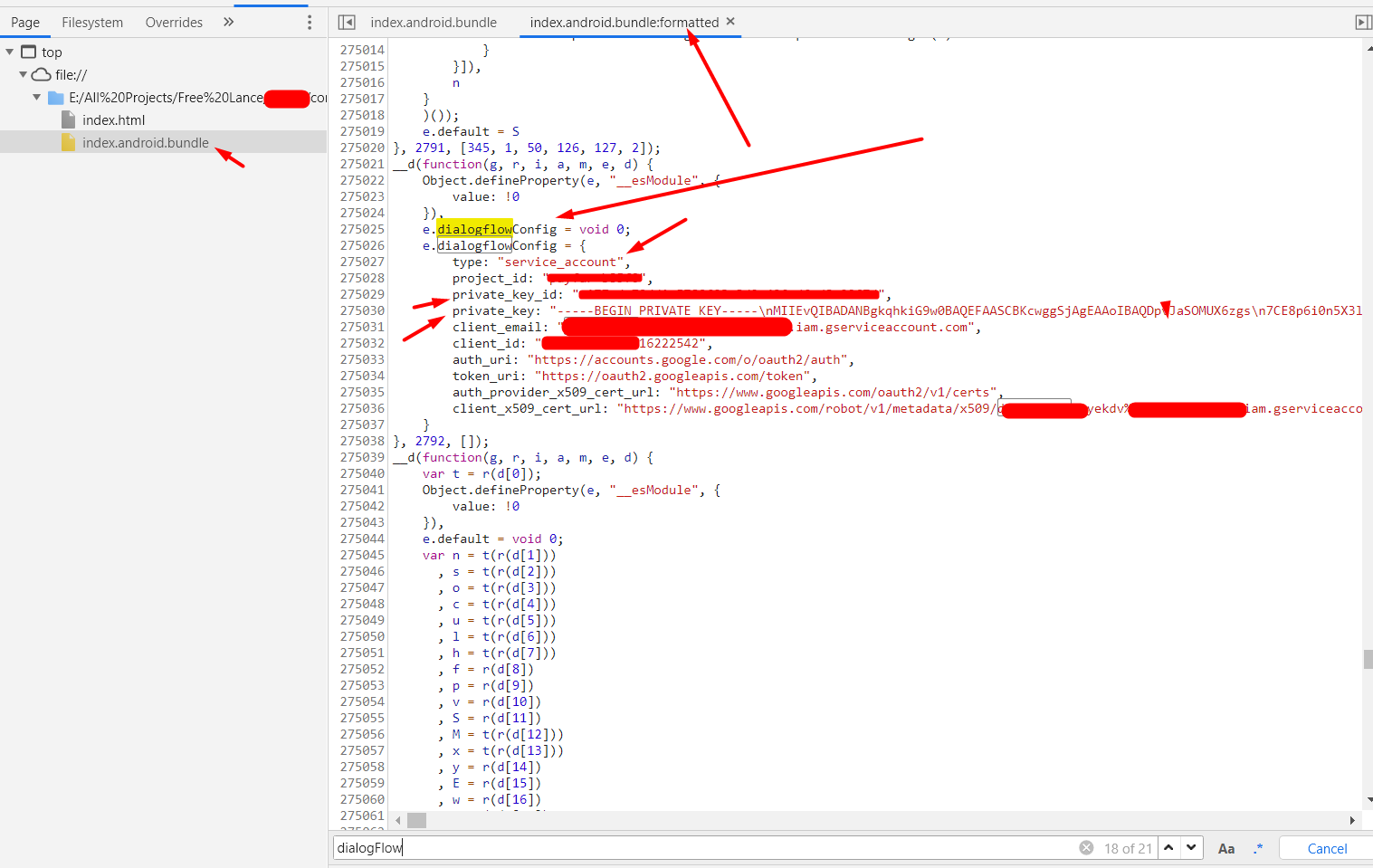mirror of
https://github.com/carlospolop/hacktricks
synced 2024-11-30 00:20:59 +00:00
43 lines
2.8 KiB
Markdown
43 lines
2.8 KiB
Markdown
|
|
# React Native Application
|
|||
|
|
|
|||
|
|
**Information copied from** [**https://medium.com/bugbountywriteup/lets-know-how-i-have-explored-the-buried-secrets-in-react-native-application-6236728198f7**](https://medium.com/bugbountywriteup/lets-know-how-i-have-explored-the-buried-secrets-in-react-native-application-6236728198f7)\*\*\*\*
|
|||
|
|
|
|||
|
|
React Native is a **mobile application framework** that is most commonly used to develop applications for **Android** and **iOS** by enabling the use of React and native platform capabilities. These days, it’s become increasingly popular to use React across platforms.
|
|||
|
|
But most of the time, the core logic of the application lies in the React Native **JavaScript that can be obtained** without needing to use dex2jar.
|
|||
|
|
|
|||
|
|
#### **Step-1**: Let’s confirm whether the application was built on React Native framework.
|
|||
|
|
|
|||
|
|
To check this, rename the APK with zip extension and then extract the APK to a new folder using the following command
|
|||
|
|
|
|||
|
|
```text
|
|||
|
|
cp com.example.apk example-apk.zip
|
|||
|
|
unzip -qq example-apk.zip -d ReactNative
|
|||
|
|
```
|
|||
|
|
|
|||
|
|
Browse to the newly created `ReactNative` folder, and find the `assets` folder. Inside this folder, it should contain `index.android.bundle`. This file will contain all of the React JavaScript in a **minified format.**React Native Reverse Engineering
|
|||
|
|
|
|||
|
|

|
|||
|
|
|
|||
|
|
#### **Step-2**: Creating a file named `index.html` in the same directory with the following code in it.
|
|||
|
|
|
|||
|
|
```text
|
|||
|
|
<script src="index.android.bundle"></script>
|
|||
|
|
```
|
|||
|
|
|
|||
|
|
React Native Reverse Engineering
|
|||
|
|
|
|||
|
|

|
|||
|
|
|
|||
|
|
Open the **index.html** file in **Google Chrome**. Open up the Developer Toolbar \(**Command+Option+J for OS X or Control+Shift+J for Windows**\), and click on “Sources”. You should see a JavaScript file, split up into folders and files that make up the main bundle.
|
|||
|
|
|
|||
|
|
> If you are able to find a file called `index.android.bundle.map`, you will be able to analyze the source code in an unminified format. `map` files contain the source mapping that allows you to map minified identifiers.
|
|||
|
|
|
|||
|
|
#### **Step-3**: search for sensitive credentials and endpoints
|
|||
|
|
|
|||
|
|
In this phase, you have to identify the **sensitive keywords** to analyze the **Javascript** code. A pattern that is popular with React Native applications, is the use of a third party services like such as Firebase, AWS s3 service endpoints, private keys etc.,
|
|||
|
|
|
|||
|
|
During my initial **recon process**, I have observed the application using the Dialogflow service. So based on this, I have searched a pattern related to its configuration. Fortunately, I was able to find **sensitive hard-coded credentials** in the Javascript code.
|
|||
|
|
|
|||
|
|

|
|||
|
|
|